A communication breakdown can have real-world consequences.
We talk a lot about the superiority of mesh technology when it comes to reliable communication. Through our BreadCrumb® wireless network nodes and InstaMesh® networking software, our Kinetic Mesh® networks power total mobility, resiliency, maximum bandwidth utilization, agile scalability, and security.
Time and time again, this technology has proven its worth in even the harshest conditions—in mines, ports, and during natural disasters—and we pride ourselves on making the world safer through our technology.
The Difference Between Point-to-Point (P2P) and Kinetic Mesh
Historically, P2P technology has been a trusted solution for many businesses. P2P wireless networks enable two access points to bidirectionally communicate with each other, as long as there is a clear line of sight between them.
While it is a simple solution, it has its limitations, such as the potential for data loss when a clear line of sight between the two points is unavailable. For example, if a transmitter isn’t placed at a high enough location in a crowded city—or even if the weather is harsh—it’s likely that service disruptions will occur.
Mesh wireless networks solve many problems businesses face when opting for P2P wireless connections. In the case of Rajant, Kinetic Mesh offers redundancy and stability that P2P wireless connections cannot.
Mesh networks can handle multiple simultaneous connections, eliminating the risk of a single point of failure and virtually abolishing downtime through redundant nodes. Ultimately, mesh wireless networks are better equipped to handle busy and extreme circumstances, ensuring that communications continue smoothly and without disruption. Rajant BreadCrumbs® provide 5x greater throughput, 5x lower latency, and 5x lower cost, compared to LTE.
.
P2P Technology: A Real-World Example
One example of P2P technology—and frankly, its limitations—is the unfortunate situation the airline industry experienced during the 2022 holiday season. Severe weather, staff shortages brought on by the pandemic, and an outdated computer system caused one of the largest domestic airlines in the U.S. to cancel thousands of flights. The widespread cancellations left families and airline staff, stranded over Christmas and New Year’s Day while unclaimed luggage piled up around the country.
This discount carrier uses a P2P business model, which means more direct flights than the hub- and-spoke routing systems used by the majority of the airline industry allow. One of the downsides to this setup is when the right factors come into play—bad weather, crowded itineraries, and crews stationed all over the country—it can be devastating for the company and its customers.
Due to the unfortunate circumstances of extreme weather, overwhelmed technology, and a P2P business model, this airline now faces $800 million in lost revenue and a damaged reputation—even among loyal customers.
Mesh Technology: A Real-World Example
Rajant Sales Director Todd Rigby discussed a few major industries that depend on the reliable connections that mesh technology facilitates. One industry, in particular, shines a light on the real-world implications of fast, reliable connections for a safer world. As a company with deep Appalachian roots, we hold our work with mining technology dear to our hearts. Through our partnership with FTP Solutions , we’re equipped to assist nearly 300 mines worldwide to help them keep their miners safer in day-to-day operations. Our InstaMesh® technology lays the groundwork for more autonomous operations in mines, leaving miners to focus on overseeing those operations from a safe, secure, connected location.
A clear line of sight is just not possible with underground mining operations. This is where mesh technology—specifically, nodes or BreadCrumbs—shines. Built for mobility, our technology makes communication—both between pieces of technology and the humans controlling them—more reliable than ever.
Steven Griggs, our VP of Sales Engineering, provides excellent insight into why mesh technology surpasses P2P and is the way for future-proofing industrial operations.
“Redundancy and reliability are two of the hallmarks and critical differentiators that Rajant InstaMesh technology brings to the party. With P2P, losing one node can be downright catastrophic. Furthermore, with communications dependent only on frequency, one risks the loss of all connectivity with just a little localized interference.
With Rajant technology, not only does InstaMesh route over multiple frequencies in a single band, but multiple frequency bands can be used to assure data delivery. Additionally, with every node making dynamic and smart routing decisions, network redundancy happens automatically in a properly designed Rajant Kinetic Mesh network.”
The Future Beyond P2P With Mesh Technology
As the world grows larger and mission-critical industries follow suit, so should the communication technology that powers them. This is one of many reasons why our work energizes us at Rajant. While P2P wireless technology helped pave the way for connectivity, mesh technology will be what drives us into the future.
Reliable, fast, and resilient technology will shape every industry that powers the world—from agriculture to mining—and we’re excited to help shape the future, one BreadCrumb at a time.













